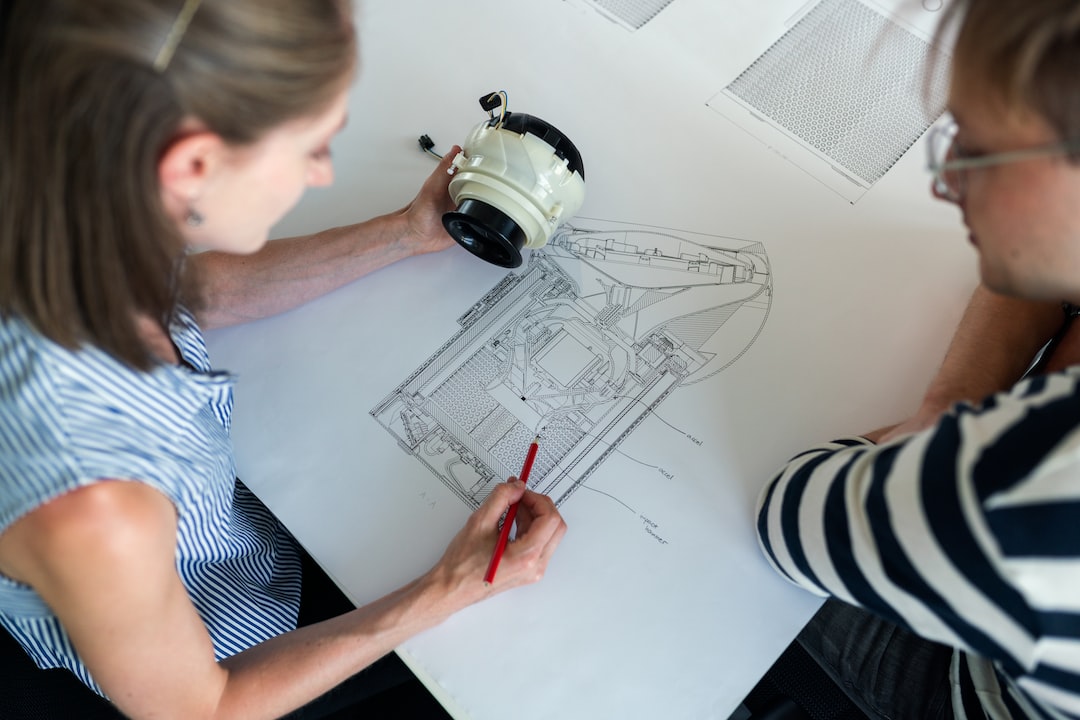Virtual Reality (VR) has revolutionized various industries, including engineering, by offering immersive and realistic experiences. This emerging technology has had a significant impact on engineering design and training processes, enhancing efficiency, accuracy, and safety.
One of the areas where VR is making a difference is engineering design. Traditional design processes often involve creating 2D or 3D models on a computer screen, which can limit the understanding of the final product. However, with VR, engineers can visualize designs in a more realistic way. By putting on a VR headset, designers can step into a virtual world where they can interact with their creations as a 3D model rather than merely observing it on a screen. This allows for a better understanding of the design’s scale, proportions, and potential issues that may arise during the development phase.
VR also plays a vital role in collaborative design. Design teams can meet virtually in a shared virtual space, regardless of their physical locations. They can interact with 3D models simultaneously, making modifications in real-time and discussing the design in a more intuitive manner. This collaborative aspect of VR improves communication among team members, reduces design errors, and accelerates the overall design process.
Moreover, virtual reality is transforming engineering training programs. Traditionally, training engineers involved a mixture of classroom lectures, textbooks, and hands-on experiences. However, these methods can be costly, time-consuming, and sometimes risky. VR offers a cost-effective and safer alternative, particularly in fields such as aerospace, automotive, or nuclear engineering, where mistakes can have severe consequences.
Through VR, trainee engineers can simulate high-risk scenarios, such as emergency situations or complex machinery operations, without endangering their lives or expensive equipment. They can develop their skills and judgment by repeatedly practicing in a virtual environment, thus reducing the chance of making errors in real-life situations. Furthermore, VR allows trainers to monitor and assess trainees’ progress more accurately, ensuring that they are fully prepared for their job roles.
VR is also proving to be a valuable tool for maintenance and repair procedures in engineering industries. In complex systems or equipment, where intricate wiring, components, or pipeline networks are involved, VR can provide a detailed visual representation of these elements. By overlaying virtual information onto real-world objects, trainees can easily identify and locate specific parts that need to be repaired or replaced. This speeds up the maintenance process, reduces downtime, and minimizes the risk of errors.
Another significant impact of VR in engineering is its ability to simulate real-world conditions. Engineers can recreate different environments, such as extreme temperatures, high altitudes, or even space, to test the performance of their designs. This enables them to identify potential weaknesses or limitations early in the development phase, saving both time and resources. VR has also been particularly beneficial in architecture and urban planning, allowing architects to walk through their designs and evaluate the impact on the surrounding environment before any construction begins.
In conclusion, virtual reality has had a profound impact on engineering design and training. By offering immersive experiences, it enhances engineers’ ability to visualize and interact with their designs, resulting in more efficient and accurate outcomes. It also provides a cost-effective and safer alternative for training programs, allowing trainees to practice in realistic scenarios without real-world risks. Furthermore, VR aids in maintenance and repair procedures by providing a detailed visual representation of complex systems. As this technology continues to evolve, its impact on the engineering industry is expected to expand further, making it an indispensable tool for engineers around the world.


